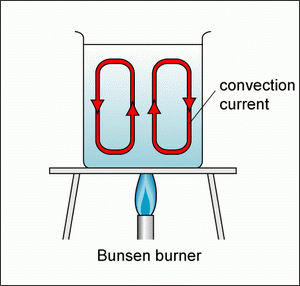Convection Currents
Expedition 376 finds the JR at Brothers volcano, which has more hydrothermal activity than any other volcano in the Kermadec Arc. Hydrothermal systems begin as cold seawater seeps into cracks & fissures naturally present on the seafloor, and then travels downward through the crust due to the force of gravity. As the water nears the lower levels of the crust, it gets heated up by the hot magma in the mantle layer beneath the crust. The heated fluid then begins to rise UP through the cracks & fissures, a process known as convection. Convection currents (sometimes also called “density currents”) result from differences in density of a substance, and density can be altered by changing the temperature, salinity, or pressure of a substance. Less dense substances RISE, while more dense substances SINK. If you’ve ever spent any time gazing at a lava lamp, you’ve watched convection in action!

An easy way to have students model convection currents in water is outlined in the two videos below, and a handy little writeup can be found here: https://drive.google.com/open?id=1MN-dIb_mQLN0h4QltW0exAZE15jdZmPeAsJ9mURDIP0
Video Part 1: https://youtu.be/vjLlGFXbPzg
Video Part 2: https://youtu.be/yEnZd4f4k3Y
Convection currents are also responsible for the movement of Earth’s plates- a process known as plate tectonics. The magma in the mantle is heated up at the lower portions of the mantle, and then the heated magma rises up and ends up pushing on the plates, causing them to move.
Hydrothermal systems not only have super-heated water, but the hot water also chemically reacts with the surrounding rock, dissolving minerals from the rock. As the hydrothermal fluid rises, due to convection, it is eventually released via vents or chimneys, and mixes with the cold, surrounding seawater. The dissolved minerals will then precipitate out of solution, forming aggregations of minerals on the seafloor, which is one thing we are exploring on this expedition. There will be a later post about mineral precipitation lesson plans in the future! Let me know if you have any questions/comments about this simple convection lesson.